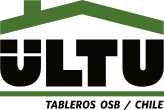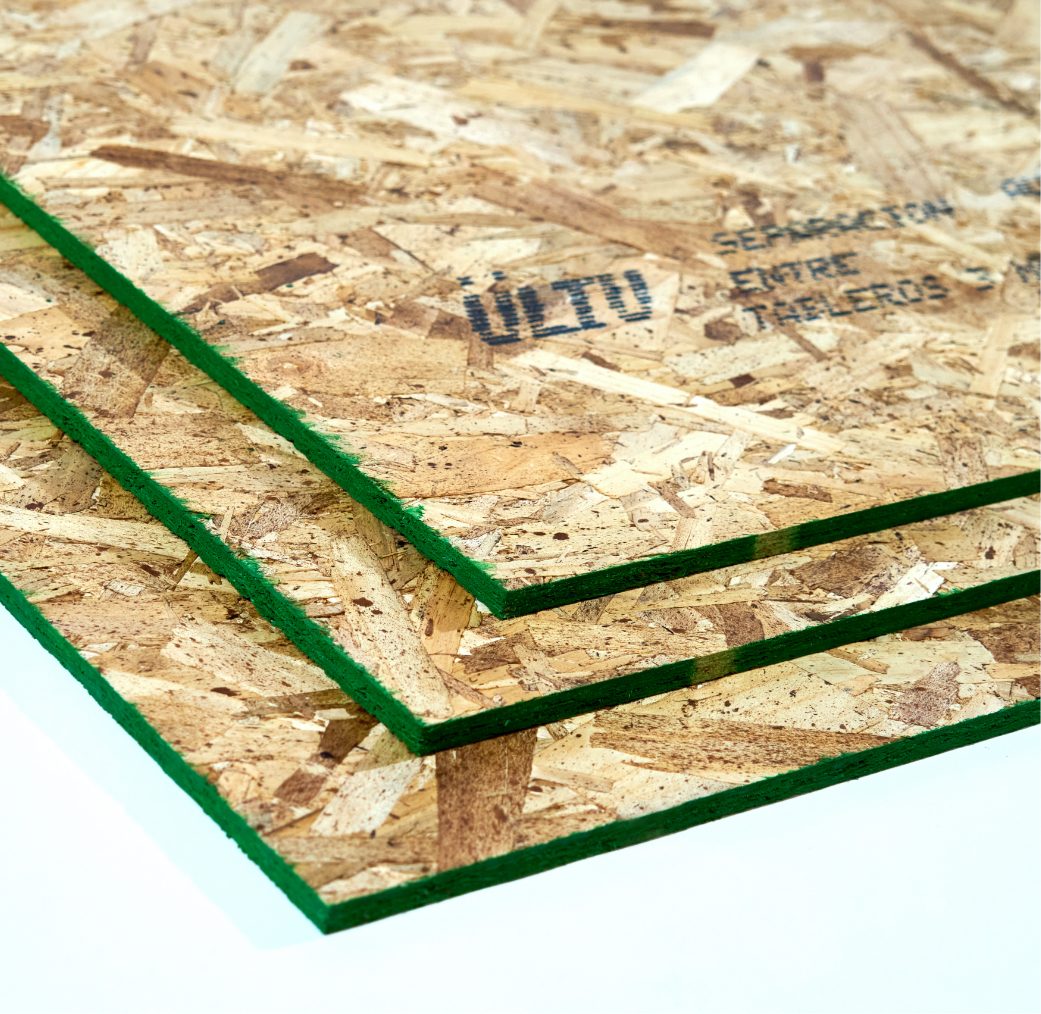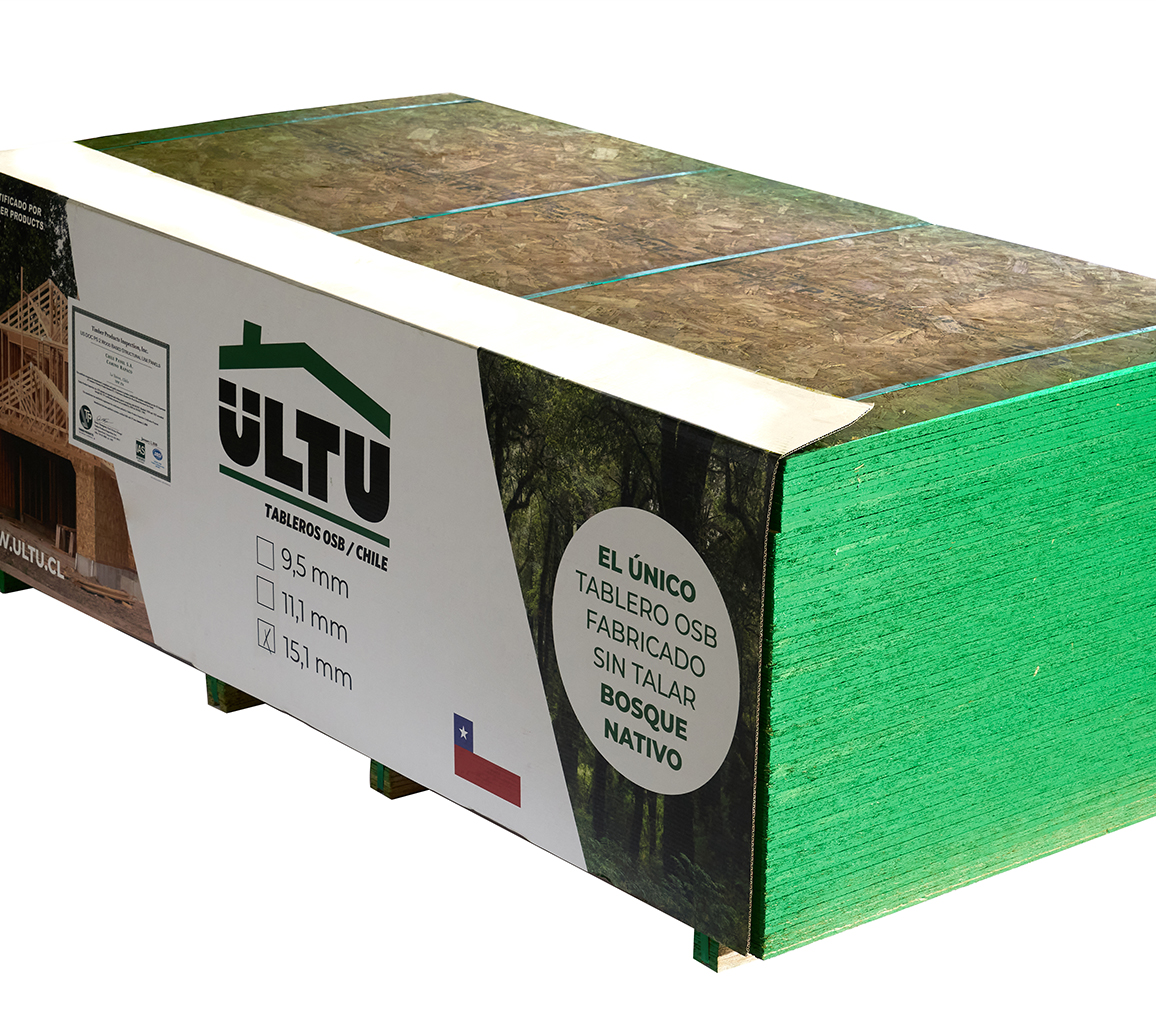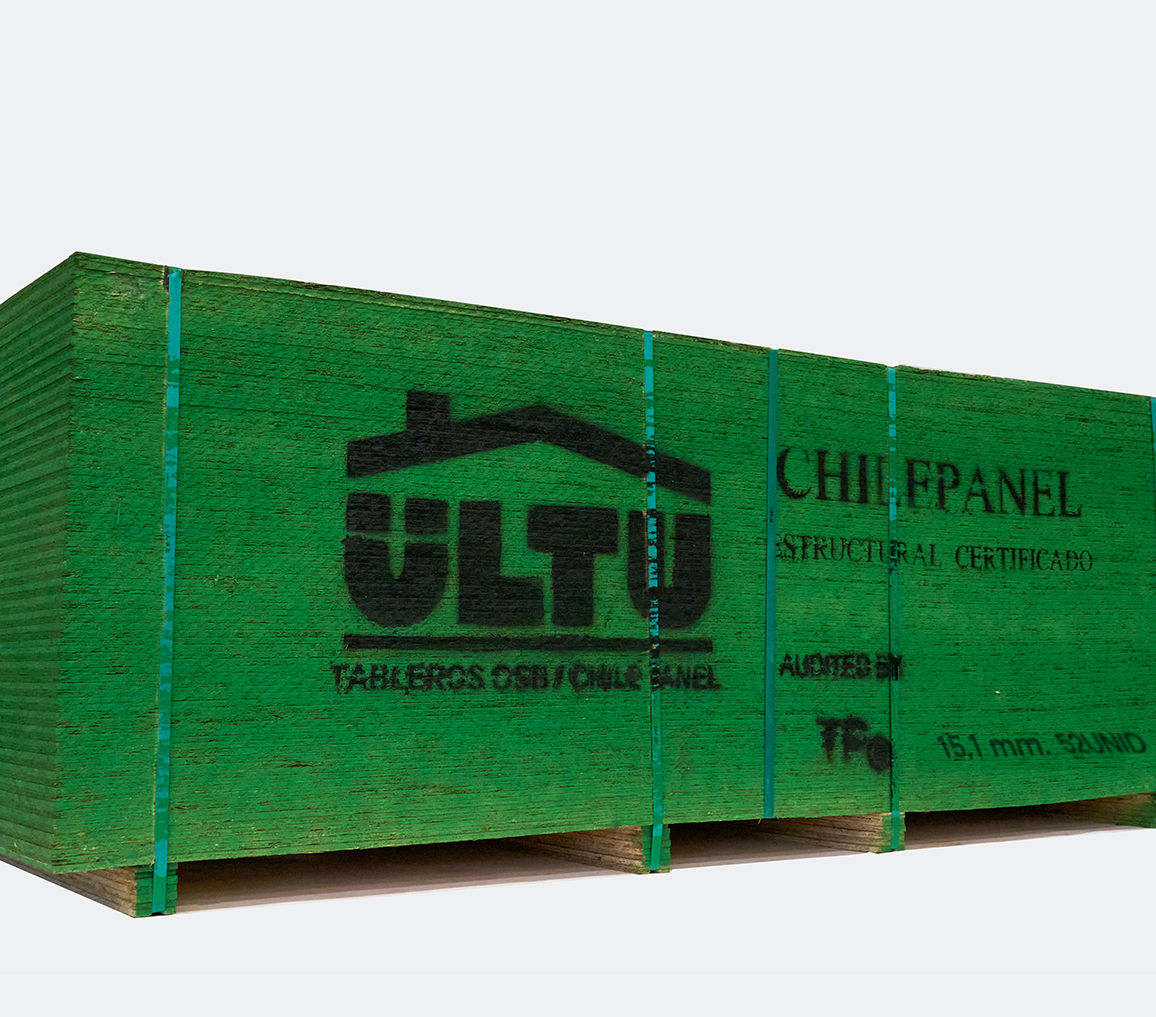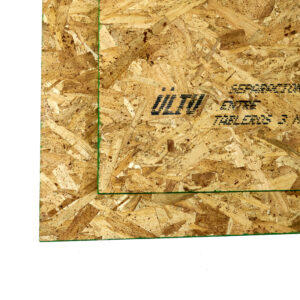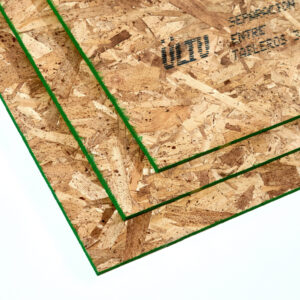OSB 15,1 mm. Structural
Board of high mechanical strength (is very little sensitive to deformation) retains temperature insulation properties, both heat and cold.
Structural use for ceilings and walls with certified span (separation between stands).
Structural certificate board according to the Chilean standard required for the efficiency of construction.
Composition
The wood used in the production of OSB, is mostly of pine. The chips are cut tangentially from the logs after debarking.
Appearance
Because of its appearance, the OSB board is perfectly identifiable due to the size of the flakes and their orientation on the surface of the board. The main advantages of OSB board reside in the field of their mechanical properties, which are directly related to the geometry of the chips, as well as its orientation on the board. Although OSB is made up of relatively long flakes, its surface is solid and relatively smooth, and can be enhanced when sanded, without losing the aesthetic appearance that is a characteristic only of the OSB.
The OSB board varies in color depending on the wood species used in its manufacturing process, the gluing system, or the pressing conditions, ranging from a straw-yellow in color to a soft brown.
As a result, one gets boards free of knots and cracks, stable and uniform, that are easy to cut, nail or screw, with common use tools.
On traditional construction methods:
- Reduces construction time
- Low costs of materials and labor.
- Mejor relación calidad / precio.
- Fabricado con renovables de pino.
Uses
In Roofs
The application of the OSB panels in roofs allow to considerably reduce the installation times of the decks, creating uniform and stable surfaces, able to receive coverings such as asphalt shingles or other roofing solutions.
Having densities under 650 Kg/m3, the boards are easy to handle.
In Walls
The use of the OSB panels in the structuring of walls allows you to remove studs and lateral bracings, generating significant savings of up to 50% on materials and labor. This excellent low-cost option has allowed to replace concrete and masonry walls.
Furniture
There are many designers that take advantage of its appearance, to create modern and versatile creations.
Shelving, doors, tables are just some of the options.
Installation
Layout and Spacing of the Fasteners
Edge Spacing
Como mínimo dejar 10 mm. entre el borde del tablero y línea de fijación.
On the Perimeter of the Boards
Every 15 cm above the support edges as a minimum.
The Interior of the Boards
Every 30 cm on the below supports as a minimum.
Dilation between Boards
Se debe contemplar una dilatación mínima de 1/8” (3 mm) en todo el perímetro de la placa.
Ventilated Environments
Las estructuras de cubiertas deben contar con ventilación adecuada, para eliminar el exceso de humedad que se ubica en los áticos, el no contar con ella puede traducirse en ondulaciones tanto en tableros como en tejuelas asfálticas. Se recomienda ventilación cruzada entre aleros y cumbreras, a razón de 1m2 efectivo cada 150m2 de planta de techo o 1 m2 efectivo cada 300 m2 si se cuenta con barrera de vapor a nivel de cielo.
Installation in Walls
Los tableros OSB se instalan generalmente en forma vertical, pero también es posible instalar en forma horizontal. De ser instalado horizontalmente es necesario que el encuentro longitudinal quede siempre apoyado. Los tableros se deberán separar 15 cm como mínimo del terreno natural. Entre el sobrecimiento y el tablero de ÜLTU OSB se deberá colocar una barrera de humedad (burlete de lata o aluminio) o desplazar al plomo del tabique 1,5 cm del sobrecimiento hacia el exterior.
Specifications and certification
| Tabla de Instalación en Techos (Productos, Separaciones, Cargas Admisibles) | |||||
| Product | Separation | Application | Thickness (mm) | Separación Máxima de los | Carga Admisible |
| Apoyos al Eje (mm) | Kg/m2 | ||||
| 15,1 mm | 32/16 | Roof | 15,1 mm | 810 | 293 |
| Tabla de Especificación de Producto | |||||||
| Product | Separation | Densidad | Thickness (mm) | Largo | Ancho | Tablero | M3 |
| Kg/m3 | mm | mm | Pallet | Pallet | |||
| 15,1 mm | 32/16 | 640 | 15,1 mm | 2440 | 1220 | 53 | 2,38 |
| Propiedades Físico/Mecánicas | ||||||
| Product | Separation | EI (N/mm2) | MM (N/mm2) | Hinchamiento | ||
| Parallel | Perpendicular | Parallel | Perpendicular | % | ||
| 15,1 mm | 32/16 | 490 | 113 | 460 | 190 | 25 |
Norma Voluntaria de Productos PS2-18
La Norma Voluntaria de producto PS2-18 cubre los requisitos de desempeño, desempeño de la adherencia, la construcción del tablero, las tolerancias dimensionales requeridas, el contenido de humedad y los requisitos de marcado de calidad de los paneles de uso estructural a base de madera. La PS2-18 cubre paneles de uso estructural que incluyen madera contrachapada estructural, OSB, otros tableros formados con colchones de material y tableros compuestos. Proporciona un programa de certificación de calidad mediante el cual las agencias de prueba calificadas inspeccionan y prueban los productos identificados que cumplen con la PS2-18.
ASTM Standards
- E 72-15 standard test Methods for conducting strength tests of panels for building construction.
- E 661-03 Standard test method for the performance of wood and wood-based floor and roof loads.
- D 1037-12 standard test Methods for evaluating properties of wood-fiber-based particles and materials of the panel
- D 1761-12 standard test Methods for mechanical fasteners in Wood.
- D 3043-17 standard test methods for bending in structural panels.
- D 4442-16 Métodos de prueba estándar para la medición directa de humedad contenido de la madera y compuestos de madera
- D 2915-17 Standard practice for the evaluation of allowable properties for grades of structural timber.
